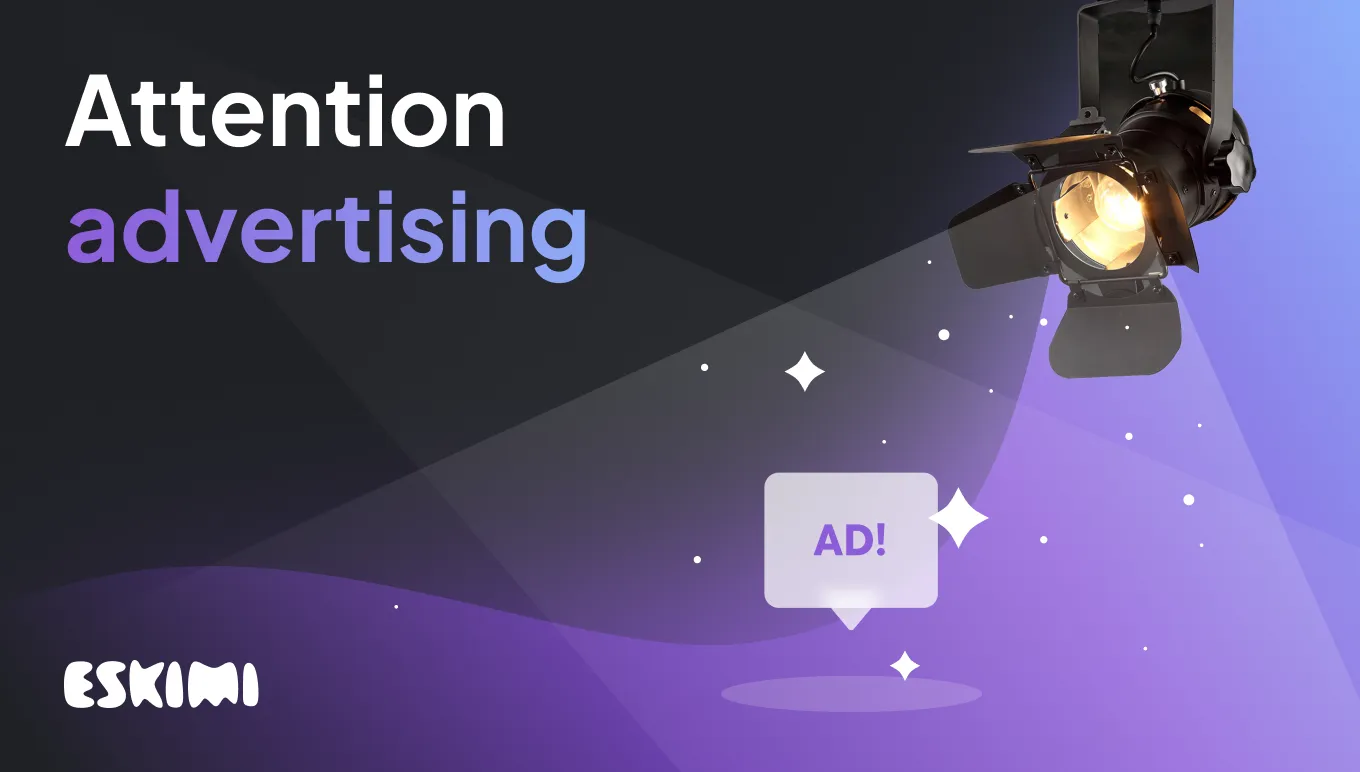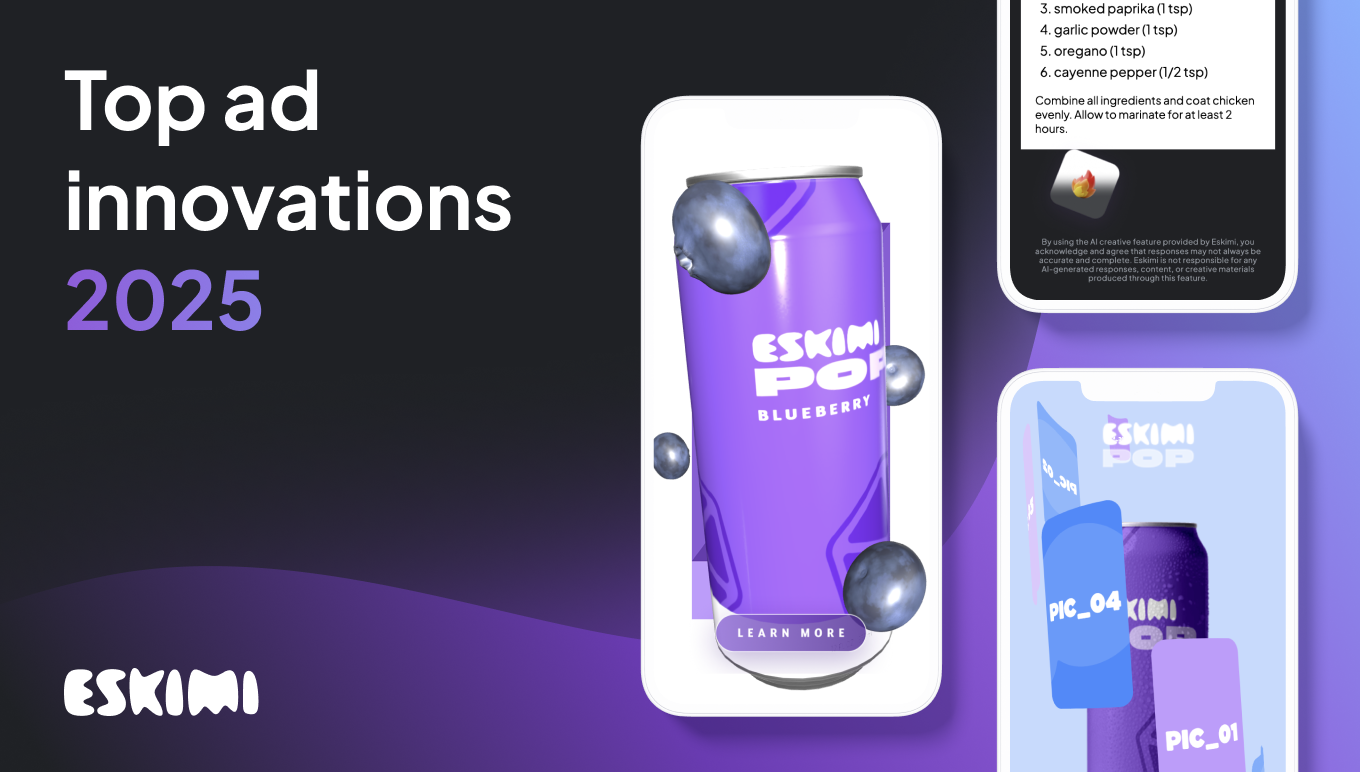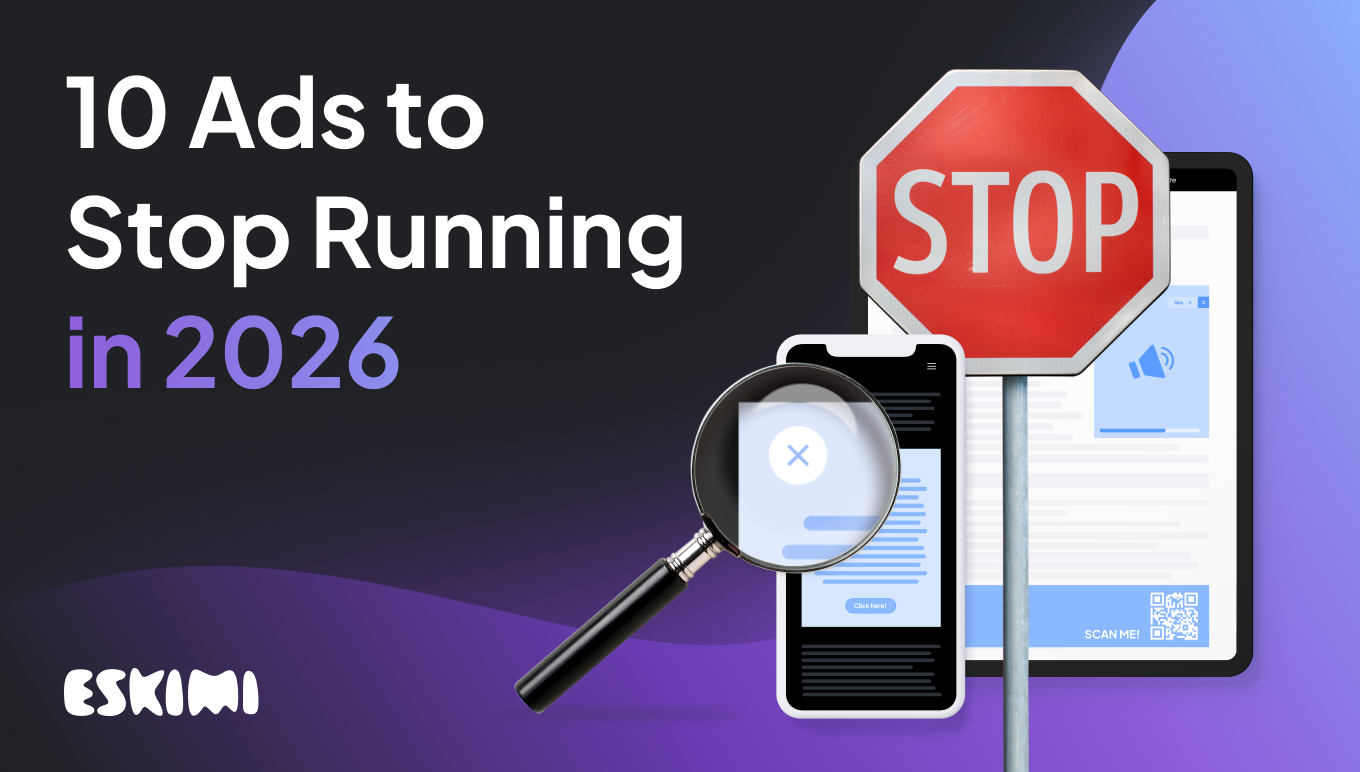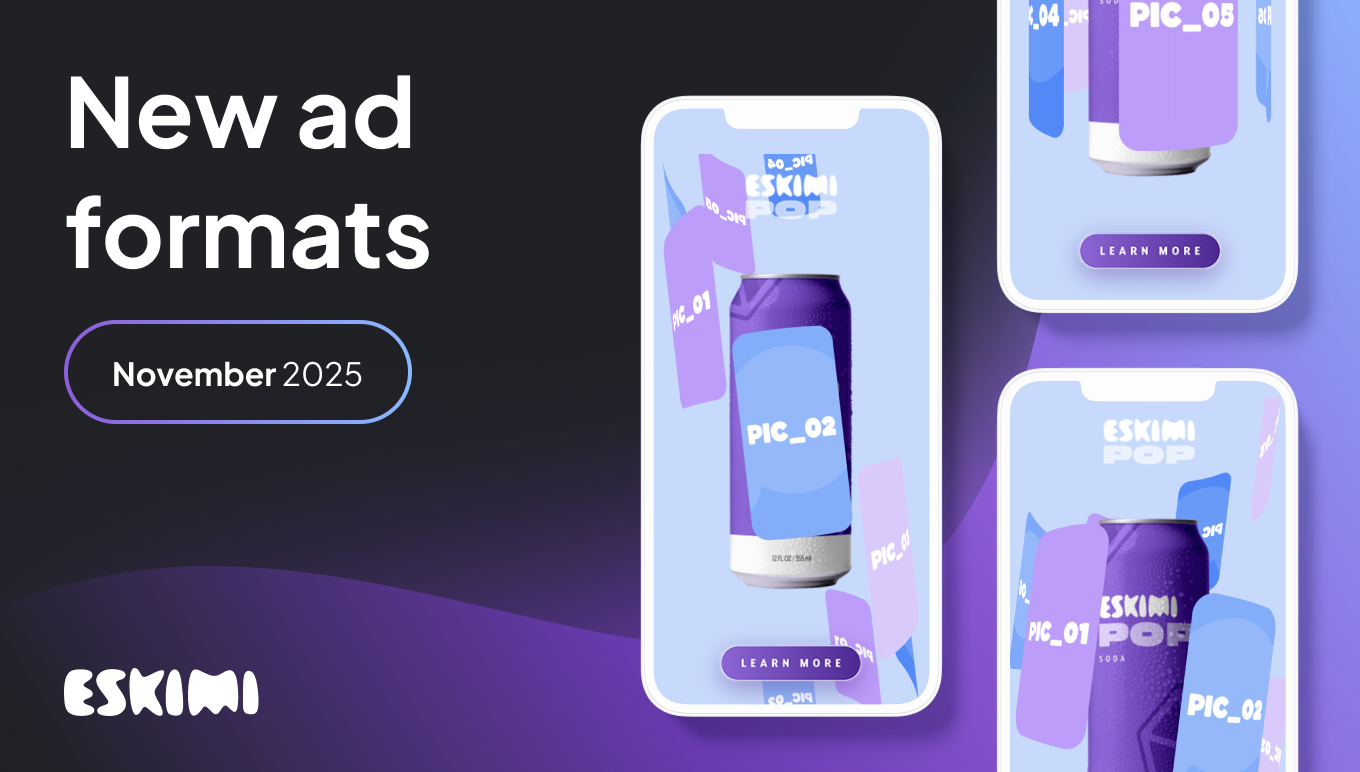Attention Advertising: The New Marketing Metric

In the bustling streets of the digital marketplace, imagine if every passerby wore a blindfold, blocking out the innumerable billboards and signs vying for their attention. That's the Internet for you: an endless stream of information, with each piece clamoring for a fraction of the user's focus. But what if there was a way to not only grab attention, but leave a memorable impression?
Welcome to the fascinating world of attention advertising! It's not just about who shouts the loudest but who whispers the right words in the right ears.
The evolution of digital advertising
Digital advertising has gone through considerable change. To offer some context, think of how far the Internet has come. From dial-up connections and Windows 95 to ultra-fast loading speeds and operating systems that do things beyond our wildest imagination.
How far has digital advertising come, though?
From banner ads to programmatic buying
- Banner ads era: In the early days of the Internet, banner ads were the primary mode of digital advertising. These static, often flashy graphics sat atop websites, beckoning users to click.
- Programmatic buying emergence: Programmatic advertising came to the fore with the evolution of technology and data analytics. It automated the buying and placement of ads, targeting specific audiences based on their online behavior, demographics, and interests. Advertisers could buy ad impressions in real time, ensuring they reached their ideal customer segments.

The shift from quality to quantity
- Spray and pray: Initially, the emphasis was on reaching as many eyeballs as possible, regardless of relevance. It was a 'spray and pray' approach, flooding users with countless ads, hoping for engagement.
- Attention metrics: With the influx of digital content, user attention became scarce. Advertisers realized that the actual value lay not in the number of impressions but in the quality of those impressions. Hence, the shift towards metrics that measured genuine engagement, like viewability, time spent, and interaction rates.
- User-centric approach: The understanding grew that for advertising to be effective, it had to resonate with the user. Instead of disrupting the user experience, the ads needed to complement it, providing value and relevance. This ushered in the era of attention advertising.
The progression from mere banner ads to sophisticated programmatic buying strategies marks a continuous endeavor to make advertising more pertinent and less invasive. With attention advertising at the helm, the future promises a more intuitive and respectful interaction between brands and their audiences.
What is attention advertising?
Attention advertising isn’t just about getting in front of your audience. It’s about being there when they’re most attentive. Think of it as the difference between shouting at someone across a noisy room versus having a deep conversation in a quiet corner.
Advertising through this method not only reveals who views the ad but also gauges the extent to which it's consumed. The emphasis lies on assessing interaction levels to determine the genuine impact of marketing campaigns. This innovative strategy leverages real-time data and insights to evaluate how audiences connect with the content.
- Engagement metrics: Measures how users interact with ads. Not just viewing, but sharing, commenting, and more.
- Relevancy: The ad must be relevant to the user when they see it.
- Contextual understanding: Knowing where the user is in their buyer’s journey and delivering ads tailored to that stage.
- Emotional resonance: Creating ads that evoke feelings, ensuring longer retention and recall.
How it differs from traditional advertising
Traditional advertising often plays the numbers game—get the ad in front of as many eyes as possible and hope it sticks. Attention advertising, on the other hand, values the quality of the interaction over mere visibility.
- Deep Data Integration: Unlike traditional methods that use a few demographics, attention advertising leverages detailed data to understand user behavior, preferences, and mood.
- Real-time Adaptation: Traditional ads are static. Once they're out, they're out. Attention advertising can adapt in real-time based on how users interact.
Types of attention advertising
As we delve into this section, we will explore the different types of attention advertising, understanding how each operates and their unique advantages.
.avif)
Bottom-up attention
This is the most primal form of attention we possess as humans. It’s the involuntary attention garnered by sudden stimuli in our environment. Think about ads with bright colors, loud sounds, or unexpected motion. These engage the viewer's senses unexpectedly, making them shift their focus to the ad.
Example: A sudden flash of lightning in an ad amidst serene content or quick-paced upbeat music in a slow-scrolling feed.
Top-down attention
This is more deliberate and goal-directed. Here, the user actively chooses to focus on something based on their current interests and goals. Ads that cater directly to a user's ongoing searches or recently browsed content fall under this. It's about relevancy and providing what the viewer is already looking for.
Example: If you've been searching for hiking gear and suddenly see a high-quality ad about a new hiking boot release, that's top-down attention.
Emotional attention
As the name suggests, this is about captivating one’s feelings and emotions. Emotion-driven ads can often leave lasting impressions. They tap into the viewer's happiness, nostalgia, empathy, or even fear.
Example: Those tear-jerking ads about families reuniting or heartwarming pet stories that not only get your attention but also tug at your heartstrings. The John Lewis Christmas ad series is a good example.
Cognitive attention
This involves mental processes and higher-level thinking. It's about engaging the audience's mind and making them think. These ads might present a problem, ask a thought-provoking question, or provide a puzzle to solve. The goal is to captivate the viewer's mind, making them pause and engage.
Example: An ad that presents a riddle or a mystery, enticing viewers to solve or discover more, or campaigns that challenge societal norms and spark discussions.
Programmatic & attention advertising: A match made in heaven
Merging the automated world of programmatic buying with attention metrics is akin to joining peanut butter with jelly— it just works. Let's explore why.
Precision targeting and real-time bidding
In a programmatic advertising setting, attention metrics serve as the North Star. Without them, ads might just be thrown into the abyss with little to no return. Attention metrics allow advertisers to:
- Understand audience behavior.
- Ascertain if their ads are genuinely impactful.
- Optimize campaigns in real time.
Enhancing return on investment (ROI): With the power of attention metrics in programmatic advertising, marketers can:
- Reduce wasted ad spend by targeting genuinely engaged users.
- Achieve better conversion rates by showcasing the most relevant ads.
- Understand which parts of their campaigns need tweaking and which are driving results.
Advantages of attention advertising
Attention advertising is a paradigm shift in the digital advertising ecosystem. Unlike traditional models prioritizing ad impressions and clicks, attention advertising values genuine user engagement and time spent with the content. With my two decades of experience in the industry, I've observed the meteoric rise and compelling benefits of this approach. Here are the most salient advantages:
Proper engagement metrics
Instead of merely counting impressions or clicks, attention advertising focuses on the real-time spent by a user with an ad. This provides a deeper understanding of user engagement and helps brands gauge the true efficacy of their campaigns.
Example: A user might click on a traditional banner ad out of curiosity but quickly close it. In traditional models, this counts as a successful interaction. However, attention advertising places the value on how long the user interacts with the ad, providing a more accurate engagement metric.
Improved user experience
Users are no longer bombarded with disruptive and irrelevant ads. Attention advertising respects users’ time, serving them relevant and engaging content.
Example: Instead of intrusive pop-ups, users might encounter immersive stories or interactive experiences that genuinely capture their interest and time.
Higher content quality
Advertisers are incentivized to create more valuable, engaging, and relevant content. The quality naturally improves when the metric shifts from mere impressions to attention.
Example: Brands might invest in creating informative videos, interactive quizzes, or immersive AR experiences instead of static banner ads.
Cost efficiency
Paying for genuine engagement can lead to a better return on investment (ROI) for advertisers. They're not just paying for eyeballs but for genuine interest and interaction. By focusing on attention metrics, brands can analyze their audience’. This leads to more targeted campaigns and better utilization of data.
Example: If a brand notices users spending more time on a particular product video, they can tailor future campaigns to highlight similar products or features.
Ad fatigue reduction
Since users are presented with fewer but more engaging ads, their chances of experiencing ad fatigue are reduced. This can increase the overall effectiveness of digital advertising campaigns.
Trust building
Attention advertising can foster a more genuine connection between brands and their audiences. When users feel they are not overtly sold to but instead offered valuable content, trust is built, leading to better brand loyalty.
Case study: Lumen on attention advertising in gaming
In collaboration with Anzu, Lumen Research recently unveiled compelling findings at Cannes Lions, reinforcing the untapped potential of in-game advertising. Below are some key takeaways from this two-year intensive study.
Remarkable viewability in in-game ads
In-game advertisements registered an impressive 98% viewability. For comparison, Lumen’s average viewability for other digital ad formats is 78%.
Attention duration: On average, in-game ads captured the gamer's attention for 3.1 seconds, slightly outpacing Lumen’s general digital ad average of 2.9 seconds.
Influencing purchase decisions: A noteworthy six in 10 players expressed a propensity to purchase after viewing an in-game ad.
Memory recall: Despite the immersive nature of gaming, in-game advertisements recorded a 49% prompted recall. This suggests a significant chunk of the audience is not just viewing but also retaining information from these ads.
Mike Follett, the CEO of Lumen Research, emphasized the in-game advertising market's burgeoning potential. As per Mike, "Anzu has amassed unparalleled attention data, showcasing the formidable power of this platform in catalyzing visual attention and brand recall."
Comparative performance with social media: In-game advertisements overshadowed Facebook and Instagram’s in-feed ads in terms of drawing attention.
Itamar Benedy, the Co-Founder and CEO of Anzu, contrasted gaming's efficacy with other mediums. With global ad-blocking rates escalating to 37%, TV ad attention plummeting to 52%, and a staggering 65% of viewers bypassing video ads instantly, Benedy highlighted the unparalleled attention metrics driven by in-game advertising.
He stated, “Gaming is emerging as a profoundly impactful channel, bringing unparalleled attention levels that were hitherto unseen in the digital ad spectrum.”
In line with their dedication to advancing the in-game ad industry, Anzu is fervently working on enhancing its ad tracking technology. This move resonates with the new in-game advertising guidelines by industry stalwarts IAB and MRC. Earlier this year, the company’s commitment to innovation was acknowledged when they were awarded a patent for a pioneering ad-tracking technology tailored to gauge viewability within 3D gaming environments.
High Impact Ads

High impact advertising is reshaping the attention economy. Enter high-impact ads: premium non-standard digital advertising formats that trigger attention and enable superior ad performance. Some key features include visually striking design, interactive elements and aid to a memorable experience. These elements are crafted to stand out, drive higher engagement, and deliver stronger conversion rates.

According to Lunio, people are bombarded with ads, making their attention a prized possession.

Insider Intelligence research has shown some staggering stats on the overlap of awareness and brand recalll. The glue? Attention.

To capture attention, it all starts with creating proper creatives and formats. High impact ads have proven to deliver unquestionable benefits.

According to Adnami, high impact ads and attention were made for each other.

The performance is staggering.

Each format brings different benefits.


How to improve consumer attention in ads
Here's a concise guide to refining your approach to ensure your ads don't just get seen but truly command attention:
1. Understand the essence of Attention Advertising
- Attention Over Impressions: While traditional advertising metrics focus on impressions, attention advertising prioritizes the quality and duration of engagement. It's not just about eyes on ads but the depth of engagement.
- Quality Over Quantity: Bombarding consumers with excessive ads can cause 'banner blindness.’ Instead, focus on delivering fewer but higher-quality ads that resonate.
2. Design for Mobile First
- Optimized Layout: Ensure that your ad's design is mobile-responsive. With a significant chunk of users on mobile devices, ads must appear pristine and legible.
- Swift Load Times: Consumers are impatient. Compress images and streamline code so that ads load within seconds.
3. Personalization is Key
- Segment and Target: Use data analytics to understand your audience. Segment them based on behavior, interests, and demographics. Then, target your ads accordingly.
- Dynamic Creative Optimization (DCO): Use DCO to automatically adjust ad content in real time, tailoring the message to the individual viewing it.
4. Context Matters
- Relevance: Ensure that your ad is contextually relevant to the content around it. An ad for hiking boots on a travel blog about mountain expeditions will garner more attention than on a blog about sea diving.
- Emotional Sync: Match the emotional tone of the content. An upbeat ad in a severe or sad context may appear tone-deaf.
5. Interactive Elements Engage
- Engage the Senses: Incorporate interactive elements like videos, sliders, and clickable quizzes. This not only keeps viewers engaged but can increase retention of your message.
- Reward Engagement: Consider gamified ads where users can win discounts or other incentives. It adds an element of fun and boosts attention.
6. Test, Analyze, Iterate
- A/B Testing: Regularly test different versions of your ads to discern which elements capture the most attention.
- Deep Dive into Analytics: Utilize attention metrics – like viewability, hover time, and engagement duration – to gauge the efficacy of your ads.
- Continuous Learning: The digital landscape is ever-evolving. Continually update your strategies based on real-world feedback.
Level Up Your Advertising with Eskimi
- Reach 96% of Open Web
- 2,500+ Targeting Options
- 100% Managed or Self-Service
- In-House Creative Studio Team
- Display, Video, In-Game & CTV
- #1 Rated DSP on G2





